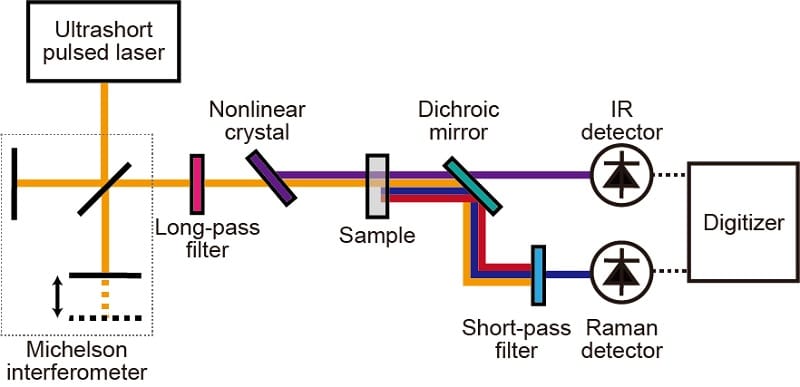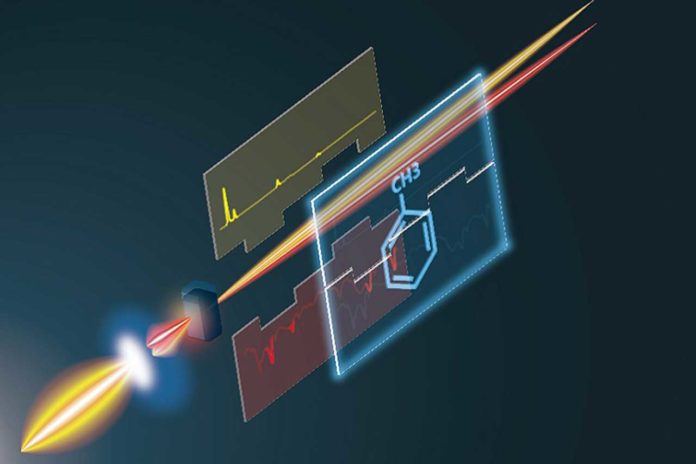Vibrational spectroscopy is a fundamental method for chemical analysis used in a variety of scientific fields. This noninvasive spectroscopy enables us to acquire bond-specific chemical information of the specimen.
The method, comprised of infrared absorption and Raman scattering spectroscopy, is quite sensitive to different types of vibrations and provides complementary vibrational spectra. However, complete vibrational information with a single spectroscopic device is challenging. It might be because of the large wavelength discrepancy between the two methods.
Scientists at the University of Tokyo have now developed a new technology that allows scientists to study molecules with increased detail and specificity. Scientists have developed a tool called a complementary vibrational spectrometer using a laser, a crystal, and light detectors.
According to scientists, the new technology could have applications in medicine, pharmacy, chemistry, or other fields.
This technology is developed using a method called vibrational spectroscopy. The advantage of using vibrational spectroscopy- the technique gives scientists different and complementary information about molecular vibrations. Also, it can measure a broader spectrum of light, combining the more limited spectra of two other tools, called infrared absorption and Raman scattering spectrometers.

Associate Professor Takuro Ideguchi from the University of Tokyo Institute for Photon Science and Technology said, “We questioned the ‘common sense’ of this field and developed something new. Raman and infrared spectra can now be measured simultaneously.”
“Complementary vibrational spectroscopy can detect light waves around the visible to near-infrared and mid-infrared spectra. Advancements in ultrashort pulsed laser technology have made complementary vibrational spectroscopy possible.”
Inside this complimentary vibrational spectrometer, a titanium-sapphire laser sends pulses of near-infrared light with a width of 10 femtoseconds (10 quadrillionths of a second) toward the chemical sample. Before hitting the example, the light is focused onto a crystal of gallium selenide.
Thus, the crystal generates mid-infrared light pulses. The near and mid-infrared light pulses are then focused onto the sample, and the absorbed and scattered light waves are detected by photodetectors and converted simultaneously into Raman and infrared spectra.
Ideguchi said, “Especially for biology, we use the term ‘label-free’ for molecular vibrational spectroscopy because it is noninvasive and we can identify molecules without attaching artificial fluorescent tags. We believe that complementary vibrational spectroscopy can be a unique and useful technique for molecular measurements.”
